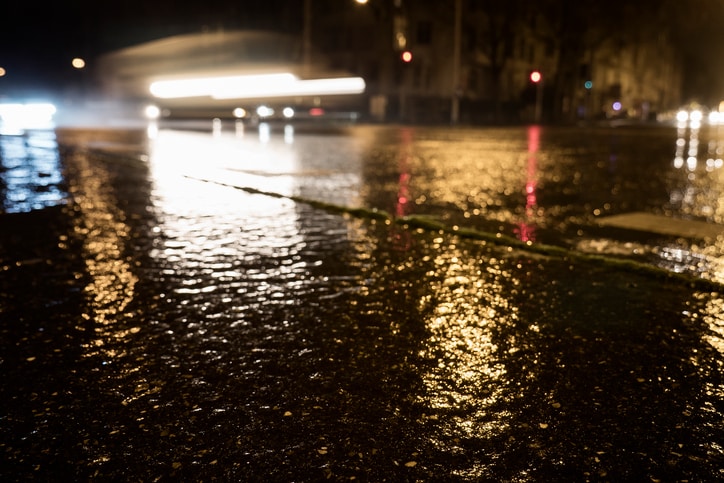
Every driver knows the importance of scanning the roadway ahead to watch for potential hazards. Most of the time, obstacles or other potential dangers are visible to the driver’s eye, and can be avoided with relative ease. But what if your eyes are intently focused ahead on the road and you still don’t see an oncoming hazard? Unfortunately, this can happen in wintery weather when a virtually invisible layer of sleek, slippery and potentially dangerous black ice forms on roadways.
What is Black Ice and How Does It Form?
Black ice gets its name from the colour of the underlying pavement surface. The ice coating is often very thin and transparent, making it extremely difficult to see.
Many drivers can be lured into a false sense of confidence when they don’t see much snow on the roadways, but black ice is a persistent risk. Ice can form on moist surfaces such as roads and sidewalks when the temperature dips below freezing, especially between sunset and sunrise, or during periods of repeated thawing and freezing. Moisture in the air that condenses into fog or dew can also freeze into a dangerous layer of ice.
Although black ice can form on any roadway, it’s most often found on bridges and overpasses because the air passing underneath the structure can make the road surface colder. Watch for patches of ice in areas shaded by trees or other objects where the temperature may also be slightly cooler than the surrounding areas.
Driving On Black Ice
Since it’s difficult, if not impossible to see black ice, you may not realize you’re driving onto an icy roadway until you’re passing over it. Always drive according to the general road and weather conditions – reduce your speed, pay attention to other vehicles and space yourself to avoid having to make any sudden stops or lane changes.
Unlike driving over snow, where there is still some traction, tires on black ice will have virtually no traction. Therefore, the best advice if you find yourself sliding on black ice is to remain calm and let the vehicle slow itself.
If you drive onto a patch of ice and your vehicle does begin to slide, resist the urge to hit the brakes. You may end up skidding more and losing control of your vehicle. Instead, remove your foot from the accelerator to gain more control and to keep the vehicle moving straight into the slide. Do not brake. All drivers in Ontario should have a basic familiarity with corrective driving techniques such as ‘turning into the slide.’ The Canadian Automobile Association recently published a tip sheet on “How to Steer Out of a Skid” that includes many useful recommendations.
Take Precautions
Thermometers on newer motor vehicle models can help drivers to gauge whether there’s a potential to encounter black ice on the road. A temperature at or near freezing should alert you to be extra cautious on the road.
Remember that these thermometers may not be entirely accurate if the sensors are near a heat source like the engine, if they are hit with precipitation that evaporates quickly, or if you have recently traveled from a warmer urban area to cooler suburban or rural roads.
Checking the current temperatures and weather forecast on the news or a weather app before heading out on the road is always a good idea. Remember, just because you’ve taken time to monitor the road conditions doesn’t mean other drivers have taken the same precautions. In these conditions, try to leave extra space between your car and surrounding vehicles and drive defensively.
Injured Due to an Accident on Black Ice?
If you’ve been involved in a motor vehicle accident caused by black ice, you may be eligible for Statutory Accidents Benefits if you sustained injuries, regardless of whether you were at fault. If another driver’s actions caused the accident, you may also be eligible to sue the other driver for your injuries and losses.
If the roadway was not properly maintained, you can also sue the municipality, but there is a very short 10 day notice period, required in writing, that limits your ability to sue. Accordingly, if you are involved in an accident where you suspect black ice or unsafe road conditions were a factor, you should contact an experienced personal injury lawyer right away.
At Howie, Sacks & Henry we help people who have been injured in collisions on icy roads and other winter driving accidents. We would be pleased to speak to you about any accident you have experienced, the nature of your injuries, and what benefits you might be entitled to claim. If you or a loved one have been injured in a motor vehicle accident, please contact Michael J. Henry at 416-361-0889, or mjhenry@hshlawyers.com.






